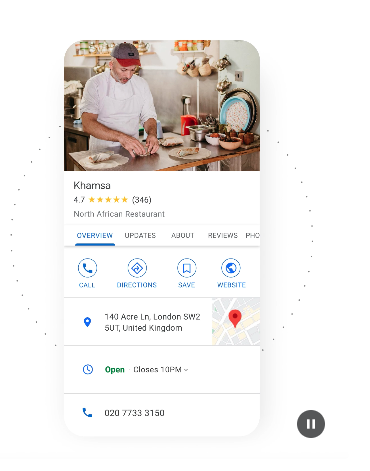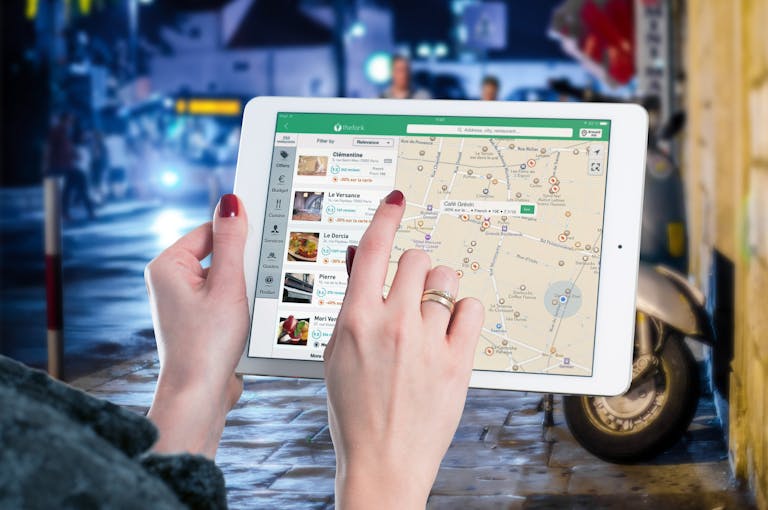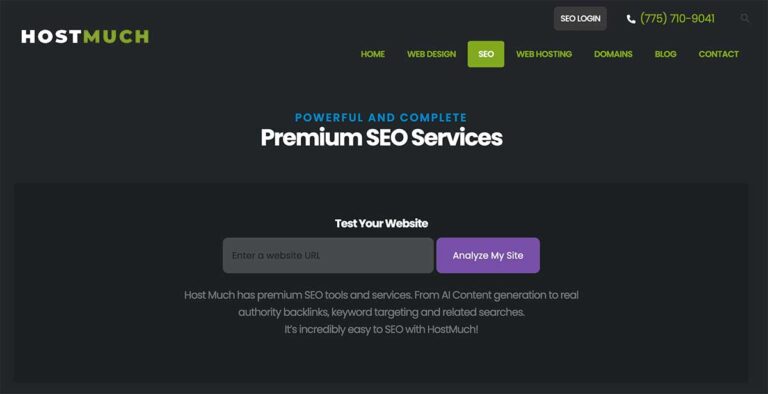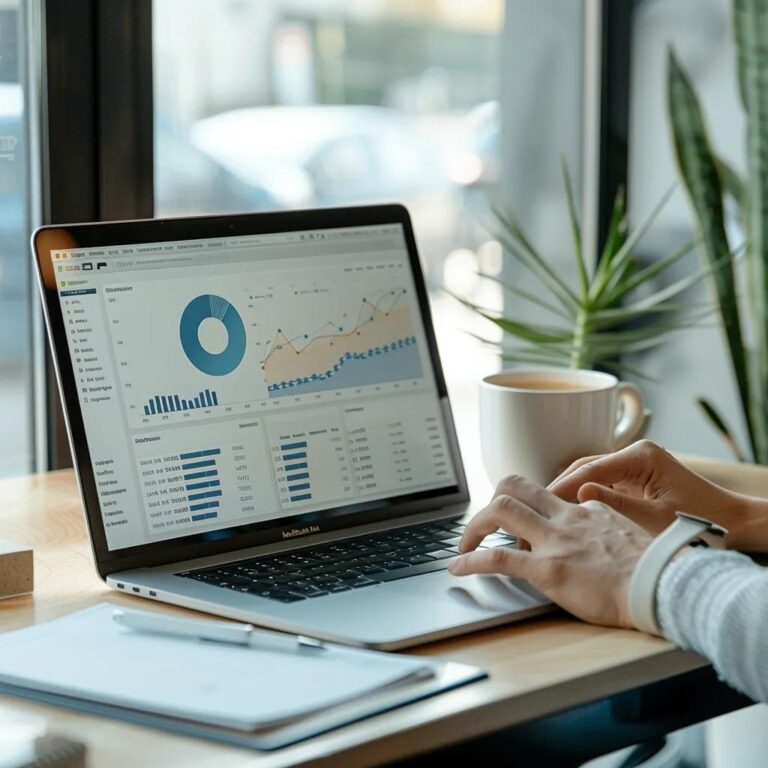Local SEO for Targeted Business Growth

Proven Strategies to Elevate Your Local Online Presence
Local Search Engine Optimization is your secret weapon for boosting your business’s online visibility in local search results, driving foot traffic, and generating revenue right in your neighborhood.
Many small businesses feel invisible online, watching competitors effortlessly capture attention and customers. That ends here. This guide is your warm, reliable companion—a clear roadmap to local SEO success that will finally put you on the map, both literally and digitally. Step-by-step, you’ll learn exactly how to optimize your Google Business Profile, keep your citations perfectly consistent, fine-tune on-page elements, build trusted local links, apply technical SEO essentials, and track performance with confidence.
Along the way, you’ll discover how to claim and verify your listing, establish authoritative citations, target the geo-specific keywords your customers are already searching for, use schema markup to stand out, and measure your progress. By the time you’ve finished, you’ll feel empowered, knowing every tool, tactic, and insider tip you need is in your hands—ready to transform your local online presence and turn searchers into loyal customers.
Why Is Local SEO Crucial for Business Growth?

Local SEO is the bridge between your business and the people actively looking for what you offer right in your community. It works by aligning your entire digital presence with the local intent of searchers—those individuals who aren’t just browsing, but are ready to act. At its core, this process involves strategically optimizing your online listings, directory profiles, and on-site content so that search engines clearly understand who you are, where you’re located, and what you provide.
When executed well, Local SEO ensures that your business appears prominently in geographically relevant queries, such as “best bakery near me” or “emergency plumber in Springfield.” Search engines like Google respond to these queries by prioritizing businesses that have demonstrated location relevance and trustworthiness. By fine-tuning your Google Business Profile, maintaining consistent Name, Address, and Phone (NAP) details across directories, and enhancing your website with locally targeted content, you send powerful signals that increase your rankings in both map results and organic listings.
The benefits go beyond search visibility.
Local SEO directly connects you to your ideal audience within your service area, creating a steady flow of high-intent customers who are already predisposed to buy. A well-optimized local presence drives increased foot traffic as more people find your storefront when searching for directions, and it boosts phone inquiries and online orders by making it easier for potential customers to reach you in the moment they’re ready to purchase.
For brick-and-mortar businesses, this translates into fuller shops, busier phone lines, and more booked appointments. For service-area businesses, it means a calendar filled with local clients who trust your expertise and proximity. In both cases, Local SEO becomes not just a marketing tactic, but a powerful growth engine—turning searches into meaningful, measurable business results while strengthening your connection to the community you serve.
How Does Local SEO Boost Online Visibility and Foot Traffic?
Local SEO enhances your online visibility by doing more than just getting your name on a map—it strategically positions your business where high-intent local customers are already looking. By fully optimizing your Google Business Profile with accurate details, engaging photos, service descriptions, and up-to-date hours, you give search engines the confidence to feature you prominently in the coveted “local pack” results at the very top of search pages.
Citations—consistent mentions of your business’s name, address, and phone number across trusted directories—further reinforce your legitimacy. When these citations match perfectly across platforms like Yelp, Bing Places, and industry-specific sites, they act as trust signals that increase your authority in the eyes of search algorithms. The result? Search engines are more likely to showcase your business ahead of less-optimized competitors.
This visibility has a direct and measurable impact on real-world results. Higher local pack rankings mean more people see your business without having to scroll, leading to more map views from potential customers, more clicks for driving directions, and more visits to your physical location. For service-based businesses, it can translate into a surge of calls, quote requests, and booked appointments. In short, Local SEO isn’t just about being found—it’s about being found first, by the right people, at the exact moment they’re ready to act.
- Optimize title tags and meta descriptions with location modifiers
Craft each page’s title tag to include both your primary keyword and a specific location reference, such as a city or neighborhood name. For example, instead of “Expert Plumbing Services,” use “Expert Plumbing Services in Springfield, IL.” Pair this with a meta description that clearly states your offering, location, and a call to action—something like, “Reliable plumbing repairs in Springfield, IL. Call today for fast service and guaranteed results.” These localized elements not only help search engines match your page to relevant geographic searches, but they also entice local users to click by signaling you serve their area directly. - Ensure your Google Business Profile categories align with your core services
Your Google Business Profile categories influence which searches trigger your listing in the local pack. Select a primary category that best represents your main offering, and add secondary categories for related services. For instance, a bakery might choose “Bakery” as the primary category, with secondary categories like “Wedding Bakery” or “Cafe” if applicable. This alignment helps Google accurately match your business to relevant local searches, preventing you from missing out on potential customers looking for your exact specialties. - Acquire consistent citations across directories to reinforce authority
Citations—listings of your business’s name, address, and phone number (NAP) on trusted directories—act like credibility markers for search engines. Inconsistent or outdated citations create confusion and can hurt your rankings. Audit your current listings across major directories such as Yelp, Bing Places, Facebook, and niche industry sites, then update them to ensure identical NAP details. Use a master spreadsheet to track changes and maintain consistency. This uniformity strengthens your local authority, improves your trustworthiness in the eyes of search engines, and increases the likelihood of appearing in top map and organic results.
These tactics collectively enhance your presence in both map and organic results, setting the stage for citation strategies.
Local SEO and Business Visibility

Local SEO isn’t just about showing up in search
In today’s market, Local SEO is about staying relevant, competitive, and profitable in the long run. For many small and mid-sized businesses, visibility in local search results determines whether new customers walk through their doors or find a competitor instead. By aligning your online presence with the buying intent of people in your service area, Local SEO ensures that when someone is ready to act, your business is the one they see first.
Rather than focusing solely on technical tweaks, think of Local SEO as a strategy that secures your position in the community’s digital landscape. An optimized local presence means that your brand consistently appears in front of the right audience, on the platforms they already use, and at the exact moment they’re searching for your services. This not only drives immediate actions—like calls, store visits, and online orders—but also builds the kind of brand recognition that keeps customers coming back.
From a business viability standpoint, Local SEO is one of the most sustainable marketing channels available. Unlike paid ads, which disappear when the budget stops, a well-maintained local presence continues to deliver visibility and trust month after month. Over time, this compounds into stronger rankings, deeper customer loyalty, and a competitive advantage that’s hard to dislodge.
Host Much Makes Local SEO Work Harder for You
While the fundamentals—like Google Business Profile optimization and citation building—are essential, Host Much takes Local SEO a step further. We integrate these best practices into a broader, data-driven growth plan tailored to your industry and market. Our process includes:
- Precision Market Mapping – Identifying the exact geographic areas where your customers search, so we target the most profitable locations first.
- Industry-Specific Directory Targeting – Going beyond generic listings to secure placement in directories and platforms that matter most in your niche.
- Local Authority Building – Leveraging community engagement, partnerships, and local content strategies to position your business as the go-to choice in your area.
- Ongoing Visibility Tracking – Delivering quarterly local ranking and engagement reports so you can see exactly how your presence is improving over time.
At Host Much, we don’t just implement Local SEO—we manage it as a living, evolving asset that grows alongside your business. By combining technical expertise with a deep understanding of local markets, we help ensure your business remains visible, trusted, and competitive for years to come.
When your local presence is strong, you’re not just competing—you’re leading. And with Host Much managing your Local SEO, you can be confident that your online visibility is working as hard as you are.
What Are the Key Benefits of Local SEO for Small and Local Businesses?
Local SEO offers three standout advantages that can significantly influence a small business’s growth trajectory. First, it drives increased foot traffic by boosting your visibility in local search rankings—placing your business directly in front of nearby customers ready to act.
Second, it delivers improved conversion rates, as users searching with local intent often have immediate needs and are up to 80% more likely to become paying customers compared to those making general searches.
Finally, it provides cost-effective marketing, since optimizing free tools like Google Business Profile and maintaining consistent citations generates a sustainable return on investment without the ongoing costs of paid ads.
By leveraging these benefits, small businesses can scale more efficiently, invest resources where they have the most impact, and naturally progress into reputation management strategies that build long-term trust and loyalty.
| Benefit | Description | Business Impact |
|---|---|---|
| Increased Foot Traffic | Higher rankings in local search put your business in front of nearby customers. | More in-store visits, greater brand visibility in your immediate service area. |
| Improved Conversion Rates | Local-intent searchers are up to 80% more likely to take action than general searchers. | Higher percentage of calls, bookings, and purchases from qualified leads. |
| Cost-Effective Marketing | Free listing optimization and citation consistency reduce dependency on paid advertising. | Sustainable ROI and better allocation of marketing budget toward growth areas. |
How Do Online Reviews and Reputation Impact Local Business Growth?

Positive online reviews do more than make your business look good
—they act as powerful trust signals that influence both potential customers and search engine algorithms. A strong average rating can directly improve your visibility in local search results, increase click-through rates, and lead to more calls, visits, and online inquiries. Businesses with consistently high ratings often see a noticeable uptick in engagement because reviews validate their quality and reliability.
To maximize this advantage, encourage satisfied customers to leave detailed, authentic feedback that highlights their positive experiences. Never purchase reviews or submit fake reviews. Respond to all reviews—both positive and negative—promptly and professionally, showing that you value customer input and are committed to service excellence. You can also repurpose your best five-star reviews in Google Posts to boost credibility and attract attention from searchers. Beyond enhancing reputation, actively managing reviews helps maintain accurate directory information, which strengthens citation consistency and supports your broader Local SEO strategy.
When it comes to online reviews, not all platforms carry the same weight for every business.
Restaurants, cafes, and hospitality-focused companies often benefit most from Yelp reviews because Yelp’s audience actively searches for dining and entertainment options, often making decisions directly on the platform. In these industries, Yelp can influence immediate consumer choices even if it doesn’t contribute heavily to search engine rankings. A high Yelp rating can still drive direct business by capturing users who trust the platform’s curated, experience-driven content.
For service-based businesses like HostMuch.com, however, Google reviews typically have a far greater impact. Google integrates review ratings directly into search results and Google Maps listings, which means a strong rating here can significantly influence click-through rates, lead generation, and local visibility. Additionally, Google’s review ecosystem is built to serve a broad range of industries—from web hosting to professional services—making it a more versatile and SEO-friendly option.
It’s also important to understand the competitive landscape between platforms. Google My Business (now Google Business Profile) allows you to link to many kinds of social media and online profiles, but it does not permit linking to Yelp. This limitation exists because Google and Yelp compete directly in the review space, and Google prioritizes keeping users within its own ecosystem. As a result, Yelp reviews will not directly improve your search engine ranking, whereas Google reviews can directly influence both your map placement and organic rankings.
From an SEO perspective, we recommend prioritizing Google reviews for their measurable impact on organic traffic to your website, increased phone calls, and higher foot traffic. Once you have a strong foundation of positive Google ratings, secondary platforms like Yelp, Facebook, or industry-specific review sites can be used to broaden your reputation footprint. This tiered approach ensures that your efforts are concentrated where they have the highest SEO value, while still building credibility across multiple channels to reach your target demographic effectively.
Check out our article on Free Google Marketing.
How to Optimize Your Google Business Profile for Maximum Local SEO Impact

Optimizing your Google Business Profile is the foundation of local SEO success because it directly influences map rankings and local pack visibility.
What Are the Steps to Claim and Verify Your Google Business Profile?
Google has tightened its verification requirements in recent years to combat fake listings, so the process now goes beyond a simple postcard or phone code. Here’s the streamlined, accurate way to claim and verify your profile:
1. Sign In and Search for Your Business
- Go to Google Business Profile Manager.
- Sign in with your Google account.
- Search for your business name.
- If it appears, click Claim this business.
- If it doesn’t appear, click Add your business to Google.
2. Choose the Correct Business Type
- Brick-and-Mortar Location: Select this if customers visit you at a permanent address.
- Service Area Business (SAB): Choose this if you visit customers at their location (e.g., plumbers, cleaning services). You’ll list your service areas instead of a storefront address.
- Co-Op or Shared Office Space:
- Google only allows this if you have permanent signage, staffed hours, and exclusive access to your space during business hours.
- If you don’t meet these criteria, you must set up as a Service Area Business instead.
3. Fill Out Your Core Business Details
- Business Name (must match your real-world branding).
- Primary Category (core service or product you offer).
- Address or Service Areas.
- Phone number and website URL.
4. Complete Verification
Google now uses several verification methods, and you may need to complete more than one:
| Method | What to Expect |
|---|---|
| Video Verification (most common now) | Walk outside to show street signs, your storefront signage, entrance, and keys opening the door. Inside, show your workspace, tools, or product displays to prove operational legitimacy. |
| Live Video Call | Google support rep verifies your location in real time via Google Meet. (not common) |
| Postcard | No longer an option. |
| Phone or Email | Instant verification via code (only for trusted accounts). |
| Business Document Upload | Google may request credentials like a business license, articles of incorporation, or utility bill showing the business name and address. |
5. Confirm and Optimize
- Once verified, log in and complete your profile:
- Add hours of operation, products/services, business description, and high-quality photos.
- Upload a logo and cover photo.
- Add social links (Google allows most, but not Yelp, as they are competitors in the review space).
Completing verification ensures your profile is eligible for local features and paves the way for NAP consistency.
How to Ensure NAP Consistency Across Your Google Business Profile?
Maintaining consistent Name, Address, and Phone (NAP) data prevents confusion for both users and search engines.
Ensuring each directory and your website use identical values avoids conflicting signals and strengthens your local citation authority, leading into content enrichment with media.
Use Photos, Videos, and Google Posts to Enhance Your Profile

Rich media increases engagement and signals active management:
- Upload high-resolution images of products, storefront, and team.
- Share short “How-To” or testimonial videos to demonstrate expertise.
- Publish weekly Google Posts promoting offers or events.
Using media consistently improves click-through rates and supports your next step of review response best practices.
What Are Best Practices for Responding to Customer Reviews?
Effective review responses build trust and improve local rankings:
- Acknowledge positive feedback with personalized thanks.
- Address negative reviews by offering solutions offline.
- Use review snippets in social proof on your website.
Prompt, courteous responses show search engines and customers that you value feedback, which dovetails into citation consistency.
Don’t Have Time To Review Responses Daily?
We offer Web Manager Services designed to take care of the repetitive, time-consuming tasks that keep your online presence running smoothly. Our knowledgeable team handles everything from website maintenance and inventory updates to ongoing search engine optimization. Think of us as your less-than-part-time, behind-the-scenes team member—quietly solving website and marketing challenges so you can focus on running your business.
We proactively monitor your site, perform preventive maintenance, and resolve issues before they impact your customers. From keeping your content fresh and your SEO competitive to ensuring your site runs at peak performance, Host Much works continuously in the background to keep your digital presence strong, visible, and ready to convert visitors into loyal customers.
What Are the Best Local Citation Strategies to Build Authority and Consistency?
Local citations are mentions of your business’s key details—such as name, address, phone number, and website—on third-party sites, often referred to as authority building or link building in the SEO world. These listings act as trust signals for search engines, confirming that your business is real, established, and relevant to a specific location. When your citations are consistent across multiple high-authority directories like Yelp, Bing Places, Facebook, and industry-specific websites and platforms, they reinforce your legitimacy and strengthen your overall online authority.
This consistency is crucial because search engines cross-reference your business information across the web to determine credibility. Even small discrepancies—like variations in address formatting or outdated phone numbers—can create confusion and weaken your rankings. By maintaining accurate, up-to-date citations, you increase your chances of appearing higher in local search results, making it easier for potential customers to find and trust your business.
How to Build and Audit Consistent Local Citations Across Directories?
Follow this systematic approach to building and auditing citations:
- Compile all existing directory listings, websites and export details.
- Correct any inconsistencies in name, email, address, phone, and website.
- Submit your business to major local directories and relevant niche sites.
- Use SEO audit tools to track and fix discrepancies quarterly.
Building and Auditing Citations the Right Way
Managing citations isn’t a one-time task—it’s an ongoing process that requires organization and attention to detail. Here’s how to approach it systematically, with real-world examples:
- Compile All Existing Directory Listings and Export Details
- Start by searching your business name on Google along with common directories like “Your Business Name site:yelp.com”.
- Export the information you find into a spreadsheet, including the Name, Address, Phone (NAP), website URL, and any profile links.
- Example: If you discover an old Yellow Pages listing with an outdated address, you’ll have it flagged for correction.
- Correct Any Inconsistencies in Name, Address, Phone, and Website
- Ensure that every citation matches your official business information exactly—same abbreviations, same phone format, same website URL.
- Example: If your Google Business Profile lists “Suite 200” but another directory says “Ste. 200” or leaves the suite number out, update them to match exactly.
- Submit Your Business to Major Local Directories and Relevant Niche Sites
- Cover the essentials: Google Business Profile, Bing Places, Yelp, Apple Maps, Facebook.
- Target niche-specific platforms based on your industry.
- Example: A law firm should be listed on Avvo and FindLaw, while a restaurant should be on TripAdvisor and OpenTable.
- Use Audit Tools to Track and Fix Discrepancies Quarterly
- Try tools like Google Search Console, Semrush, Backlinko, BrightLocal, Whitespark, or Moz Local. They can scan hundreds of directories for mismatches, audit your site for technical issues, and some like HostMuch SEO can even scan your competition to see how they rank and why.
- Run a quarterly audit to catch changes from third-party data aggregators that might overwrite your info.
- Example: If a phone carrier’s database pushes an old number to a local directory, you’ll catch and fix it before it confuses customers.
Why It Matters
A clean, consistent citation profile doesn’t just look professional—it tells search engines your business information is authoritative and reliable. Building your domain authority increases search engine trust, which then boosts your local search rankings and lays the groundwork for targeted directory building, where you focus on the highest-value platforms for your industry and region.
Which Niche and Major Local Directories Should You Target?

Niche Directories and Media Opportunities
While major directories like Google Business Profile, Bing Places, Yelp, and Facebook are essential, your Local SEO strategy becomes far more powerful when you include niche directories and media-based listings. These specialized platforms connect you directly with your target audience, reinforce your credibility, and often generate high-quality backlinks that boost search rankings.
- Niche Directories
- Angi (Home Services) – Perfect for contractors, plumbers, electricians, and remodeling companies.
- Healthgrades (Healthcare) – A go-to platform for doctors, dentists, and wellness providers.
- TripAdvisor (Hospitality & Tourism) – Essential for hotels, attractions, restaurants, and travel-based businesses.
- Avvo (Legal) – For attorneys and law firms looking to generate leads through verified profiles.
- Houzz (Interior Design & Home Improvement) – For designers, builders, and specialty home service providers.
- News Outlets
Getting mentioned in local news outlets—whether it’s the digital edition of your local newspaper or a regional magazine—can provide lasting SEO value.- Submit press releases about new services, milestones, community events, or awards.
- Offer yourself as a source for expert commentary in your field.
- Example: A bakery launching a seasonal product can send a press release to the local food and lifestyle reporter, earning coverage that links back to their website.
- Local & Industry Blogs
Blogs often have loyal readerships and can be powerful drivers of targeted traffic.- Partner with local lifestyle bloggers to feature your business in reviews or “best of” lists.
- Pitch guest articles that showcase your expertise, such as “5 Tips for Maintaining Your Home’s Roof Before Winter” for a regional home improvement blog.
- Engage in collaborations, such as giveaways or sponsored content, that include backlinks and social mentions.
- PR Platforms & Syndication
- Use services like PRWeb, EIN Presswire, or HARO (Help a Reporter Out) to distribute your stories to journalists looking for sources.
- These mentions not only improve brand visibility but can result in backlinks from high-authority domains—something search engines reward.
Why It Matters for Local SEO
Niche directories ensure you’re visible in the exact spaces your potential customers are searching, while news outlets and blogs expand your reach beyond directory searches. Together, they create a more diverse and authoritative backlink profile, strengthen your reputation, and help position you as an expert in your industry and community.
How Does Citation Consistency Boost Local Search Rankings?
Citation consistency reduces conflicting signals, signaling to search engines that your business information is authoritative and stable.
High consistency leads directly to improved local pack positions and paves the way for targeted keyword research.
How to Conduct Local Keyword Research and On-Page Optimization for Targeted Growth
Local keyword research is the foundation of any effective Local SEO strategy because it identifies the exact search terms your target audience is using in your geographic area. By focusing on geo-specific keywords (e.g., “Springfield web design” or “plumber near Main Street”) and long-tail queries (e.g., “24-hour HVAC repair in North Springfield”), you can align your content with user intent and attract highly qualified local traffic.
Once you’ve identified your target keywords, the next step is on-page optimization. This means strategically incorporating those keywords into your title tags, meta descriptions, headers, and service page content—while keeping the language natural and engaging. Creating dedicated service area pages for each city or neighborhood you serve can also significantly improve your local relevance. Pairing these pages with locally focused testimonials, references to landmarks, and service-specific images further strengthens your connection to the community.
By combining precise keyword targeting with location-optimized content, you send strong relevance signals to search engines, improve your rankings for high-intent local searches, and increase the likelihood of converting visitors into paying customers.
Check out our article on Master Keyword Research for Higher Search Visibility.
What Are Geo-Specific and Long-Tail Keywords for Local SEO?
Geo-specific keywords include city or neighborhood modifiers, while long-tail variants capture detailed intent:
- “Springfield vegan bakery”
- “Affordable HVAC repair near me”
- “24-hour pharmacy open today”
These keywords help you reach hyper-targeted audiences, setting up optimized service pages.
How to Optimize Service Area Pages and Local Content Effectively
Optimizing service area pages is about making each location you serve feel personal, relevant, and trustworthy to both search engines and potential customers. Start by creating dedicated pages for each service area, using a clear title format such as “Web Design in Springfield, IL” or “Emergency Plumbing – Downtown Denver.” This not only improves keyword targeting but also makes it easy for search engines to match your page to local intent searches.
Within each page, weave in references to local landmarks, neighborhoods, or well-known events in both headers and body copy. For example, a landscaping company in Seattle might mention “serving homes near Green Lake and the Ballard Locks.” These details add authenticity, signaling to search engines that your business is truly active in the area.
Finally, include unique, location-specific customer testimonials to showcase your track record in that community. A testimonial from a local resident or business not only builds trust but also adds naturally occurring local keywords to your page. This combination of targeted titles, localized content, and real-world proof creates service area pages that stand out in search results and convert more visitors into customers.A well-structured local page drives relevance signals that enhance meta data optimization.
What Meta Data Optimizations Improve Local Search Visibility?

Optimizing your metadata for Local SEO means crafting title tags, meta descriptions, and structured data in a way that both search engines and local customers find irresistible. Start with title tags that combine your primary keyword with the target city or service area—ideally within 55–60 characters to avoid truncation. For example: “24-Hour Emergency Plumbing – Springfield, IL” or “Custom Web Design in San Diego, CA.” This ensures your listing is directly relevant to local search queries.
Your meta descriptions should be action-oriented, between 150–160 characters, and include both your service offer and location. Phrases like “Call today for fast, reliable HVAC repair in Denver” or “Book expert landscaping in Austin—free estimates available” help drive clicks by speaking to user intent. The goal is to combine location, service, and a call-to-action into a concise, compelling message that encourages searchers to choose you over competitors.
Finally, implement structured data markup—specifically the LocalBusiness schema—on your landing pages. This schema helps search engines understand your business details, including address, phone number, opening hours, and service areas, making your listing eligible for rich snippets and improved local pack visibility. When title tags, meta descriptions, and schema markup are optimized together, you create a metadata framework that boosts both rankings and click-through rates, setting the stage for stronger local link building and overall search authority.
Which Local Link Building Techniques Drive Targeted Business Growth?

Local Link Building: Strengthening Authority Through Community and Partnerships
Local link building is one of the most impactful ways to improve your domain authority and signal both trust and relevance to search engines. By securing backlinks from reputable community organizations, local businesses, and industry partners, you not only boost your rankings but also create a web of credibility that strengthens your brand’s presence both online and offline. Search engines view these locally relevant backlinks as endorsements, helping to position your business as an authoritative, established part of the community you serve.
How to Build Local Business Partnerships and Community Engagement Links
Strong relationships with other businesses and organizations in your area are the cornerstone of effective local link building. Start by identifying neighboring businesses and complementary service providers whose audiences overlap with yours. A web design firm, for example, might partner with a local marketing agency to produce co-authored blog content, linking to each other’s sites in the process.
Another proven approach is sponsorships—support local events, sports teams, or charitable initiatives, and ensure your contribution is acknowledged with a backlink on the event’s or organization’s website. Even a modest sponsorship of a community 5K or high school fundraiser can yield valuable exposure and a high-quality local link. Additionally, joining your local chamber of commerce or relevant business associations can provide permanent directory listings that often rank well in search results.
The Role of Local Press Mentions and Sponsorships in Link Building
Local media outlets are powerful sources of authoritative backlinks. By issuing press releases for notable milestones—such as launching a new service, expanding into a new location, or winning an award—you can secure coverage from newspapers, radio stations, and online publications. Many of these outlets publish digital versions of their stories, which include clickable links back to your site.
Sponsorships can also lead to press mentions. If your business supports a local charity drive or participates in a community event, it’s common for local news outlets to highlight sponsors in their event coverage. Even more, offering expert commentary for community-related articles positions you as a go-to authority in your field, increasing the likelihood that journalists will link back to your website in future stories.
By weaving together partnerships, sponsorships, and media outreach, local link building becomes more than an SEO tactic—it’s a community engagement strategy. This approach not only reinforces your authority with search engines but also deepens your brand’s real-world reputation, making it easier to earn future backlinks and stay top-of-mind with both customers and partners.
How to Identify and Acquire High-Quality Local Backlinks?
When building local backlinks, quality matters far more than quantity. Start by using backlink analysis tools such as Ahrefs, SEMrush, or Moz to identify referring domains in your niche. This ensures your efforts are focused on sites that already publish content relevant to your industry. Next, evaluate each potential site’s Domain Authority (DA) and overall link relevance—aim for partners whose audience and location overlap with yours, as these links send the strongest trust and relevance signals to search engines.
Once you’ve identified high-value prospects, craft personalized outreach pitches that clearly highlight mutual benefits. Instead of a generic “please link to my site” request, offer something of value—such as a guest post, collaborative project, or event sponsorship that benefits both audiences. This approach builds relationships that lead to lasting, authoritative backlinks that can directly support your technical SEO efforts, improve rankings, and strengthen your online visibility.
How Host Much Can Help
At Host Much, we manage this process for you from start to finish. We use professional SEO tools to uncover the most relevant and high-authority backlink opportunities for your business, then handle the outreach with a focus on building real partnerships. Our team crafts tailored pitches, coordinates collaborations, and ensures all acquired backlinks align with your Local SEO strategy. This targeted approach means every link we secure works to improve your technical SEO foundation, boost your search rankings, and drive meaningful local traffic to your website.
How to Implement Technical SEO and Schema Markup for Local Businesses?
Technical SEO ensures that search engines can accurately understand, index, and present your local business information in search results. By optimizing site speed, mobile responsiveness, structured data, and crawlability, you make it easier for search engines to display rich results—such as map listings, star ratings, and business details—that capture user attention. These enhancements not only improve visibility in local search but also increase click-through rates, driving more qualified traffic to your website and ultimately boosting conversions.
What Schema Markup Types Should Local Businesses Use?
Local businesses should implement:
- LocalBusiness schema for NAP and service details.
- Service schema to describe individual offerings.
- Review and AggregateRating schema to surface testimonials.
- FAQ Page schema for consumer questions.
Structured data clarifies your entity relationships and lays the groundwork for implementing JSON-LD examples.
Schema Markup for Local Businesses
Implementing schema markup, particularly LocalBusiness schema, is essential for helping search engines accurately interpret local business information. This structured data enhances the display of rich results, which can significantly improve click-through rates and overall visibility in search results.
This citation reinforces the article’s guidance on using schema markup to improve search engine understanding and visibility.
How to Implement Structured Data for Google Business Profile and Reviews?
Embed JSON-LD scripts in your site’s header:
This markup signals search engines to generate rich results, which underscores the importance of mobile performance.
Why Are Mobile Responsiveness and Website Speed Critical for Local SEO?

The Role of Mobile Responsiveness and Load Speed in Local SEO
Mobile responsiveness and site speed have evolved from being best practices to becoming critical ranking factors for both general and local search results. Google officially began incorporating page speed as a ranking signal in desktop search results in 2010 and extended this to mobile search in July 2018 with the launch of the “Speed Update.” This change meant that websites that load slowly on mobile devices could be demoted in search rankings, especially for competitive queries. In June 2021, Google further expanded this focus with its Page Experience Update, which introduced Core Web Vitals—metrics that measure loading performance, interactivity, and visual stability—directly into its ranking algorithm.
For local searches, these performance factors carry even more weight. Google prioritizes delivering fast, mobile-friendly results to users conducting “near me” searches, often on mobile devices in real time. A slow or poorly optimized site can lead to higher bounce rates, lower engagement, and ultimately fewer conversions, even if your business ranks well initially.
To stay competitive, businesses should aim for Lighthouse performance scores above 90 on mobile, signaling to Google that their site offers a fast, user-friendly experience. Achieving this involves:
- Minifying CSS and JavaScript to reduce file sizes and eliminate render-blocking resources.
- Leveraging browser caching to store frequently accessed resources locally, speeding up repeat visits.
- Using responsive design frameworks like Bootstrap or Tailwind CSS to ensure consistent readability and usability across devices of all sizes.
A technically solid website doesn’t just improve rankings—it also builds trust with customers by delivering a seamless experience from search result to conversion. When paired with a strong Local SEO strategy, technical performance optimization becomes a force multiplier, helping you maintain higher rankings, increase click-through rates, and generate more qualified leads from your service area.
How to Measure and Track Local SEO Success for Targeted Business Growth?
Measuring local SEO success relies on tracking specific metrics that reflect visibility, engagement, and conversions in your target area.
What Key Performance Indicators (KPIs) Should You Monitor?
- Local Pack Rankings for target keywords.
- Google Business Profile Views, Searches, and Actions.
- Click-through rates on local landing pages.
- Number and sentiment of new online reviews.
Monitoring these indicators informs your next analytics deep-dive.
How to Use Google Analytics and Search Console for Local Insights?
- In Google Analytics, segment traffic by location using Geo reports.
- In Search Console, view queries that trigger local pack impressions.
- Track landing page engagement metrics (bounce rate, session duration).
These insights guide your ongoing NAP audits and citation monitoring.
How to Maintain NAP Consistency and Monitor Citation Health?
- Schedule monthly checks for discrepancies.
- Update any outliers using your Business Profile manager.
- Record changes and improvements in a centralized spreadsheet.
Consistent NAP data maintains trust and relevance, pointing toward continuous optimization strategies.
What Are Effective Strategies for Continuous Local SEO Improvement?
Iterative local SEO improvement involves:
- Quarterly content updates to reflect new services or promotions.
- Bi-annual schema and metadata audits.
- Ongoing review solicitations and professional responses.
- Regular backlink prospecting and community engagement.
Sustained attention to these areas ensures your business remains competitive in local search and drives steady growth.
My Local Store’s local SEO success reflects the power of targeted strategies combined with expert web management. Ready to boost your own local presence and convert searches into customers? Contact HostMuch today to explore tailored Local SEO, web design, hosting, and management solutions that deliver measurable business growth.
Conclusion
Implementing local SEO strategies can significantly enhance your business’s online visibility, driving targeted foot traffic and increasing conversion rates. By optimizing your Google Business Profile, maintaining citation consistency, and leveraging local keywords, you can connect with potential customers in your area more effectively. These actionable insights not only reinforce your authority but also pave the way for sustainable growth. Start optimizing your local presence today by exploring comprehensive Local SEO services tailored to your business needs.





